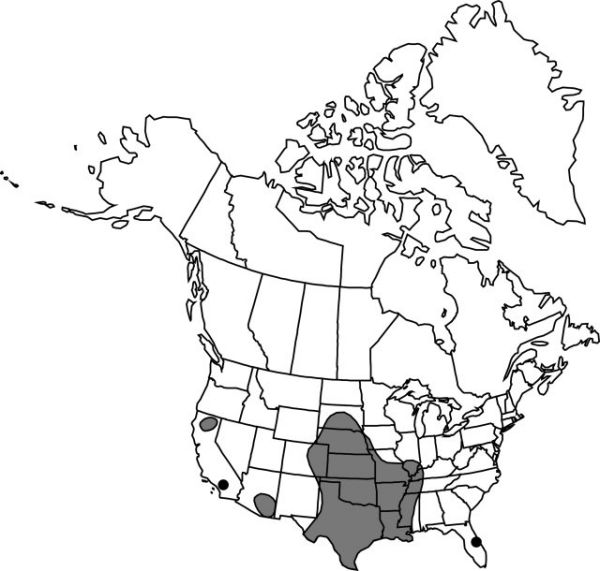Heteranthera limosa
Ges. Naturf. Freunde Berlin Neue Schriften 3: 439. 1801.
Plants annual. Vegetative stems submersed with elongate internodes only on plants in over 5 cm of water, or emersed and short. Flowering stems 2–24 cm, distal internode 1–11 cm. Sessile leaves forming basal rosette, blade linear to oblanceolate, thin or sometimes thickened, 3.1–6 cm × 3–5 mm. Petiolate leaves emersed; stipule 1–6 cm; petiole 2–13 cm; blade oblong to ovate, 1–5 cm × 4–33 mm, length equaling or greater than width; base truncate to cuneate, apex acute. Inflorescences 1-flowered; spathes 0.9–4.5 cm, glabrous. Flowers opening within 1 hour after dawn, wilting by midday; perianth blue or white, salverform, tube 15–44 mm, limbs essentially actinomorphic, lobes equal, narrowly elliptic, 5.2–26.3 mm, distal lobes yellow toward base; stamens unequal, lateral stamens 2.3–7.8 mm, central stamen 3.3–7.2 mm; filaments linear, glandular-pubescent; style glabrous. Seeds 9–14-winged, 0.5–0.8 × 0.2–0.6 mm. 2n = 14.
Phenology: Flowering May–Nov.
Habitat: Shallow water or emersed at pond edges and in roadside ditches
Elevation: 0–2000 m
Distribution

Ariz., Ark., Calif., Colo., Fla., Ill., Iowa, Kans., Ky., La., Miss., Mo., Nebr., N.Mex., Okla., S.Dak., Tenn., Tex., Mexico, West Indies, Central America, South America (Argentina, Bolivia, Brazil, Colombia, Ecuador, Paraguay, Venezuela).
Discussion
Personal observation of Heteranthera limosa suggests that it is best adapted for growth in water less than 5 cm deep and is a poor competitor with the closely related H. rotundifolia in deeper waters.
Selected References
None.